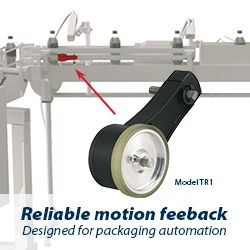How Gartners 10 Dimensions of Warehouse Complexity can Transform your WMS Strategy
As warehouse operations evolve under mounting pressures for speed, accuracy, and adaptability, understanding operational complexity is the key to building an effective Warehouse Management System (WMS) strategy.
In a recent report, “Use the 10 Dimensions of Warehouse Complexity Before Selecting a WMS,” Gartner provides a practical framework to help supply chain leaders evaluate the nuanced challenges within their warehouse networks and define the right WMS requirements accordingly.
Companies often mistake square footage or industry vertical for the main driver of operational demand. However, Gartner emphasizes that work practices, throughput, constraints, and adaptability can significantly influence the complexity and sophistication required in a WMS.
.jpg)
The 10 Dimensions
Gartner identifies ten dimensions that affect warehouse complexity, including:
- Warehouse size and layout: A small facility with a highly dynamic layout can be more complex than a massive bulk-pick operation.
- Volume and types of work: Facilities handling high-frequency, mixed-unit orders (like in e-commerce or service parts) often face significant complexity.
- Product characteristics: Managing temperature-sensitive, hazardous, or customer-owned inventory adds layers of governance and handling protocols.
- Cycle time requirements: Facilities with tight service-level agreements or rapid order cycles require more robust task orchestration tools.
- Automation and adaptability: Integration with robotics, conveyor systems, and AMRs, plus the need to rapidly adapt workflows, drives the need for scalable WMS platforms.
For multisite operators, Gartner recommends grading individual facilities using this model to inform a tiered or hybrid WMS deployment strategy, avoiding a one-size-fits-all approach.
“According to Gartner, failing to align WMS functionality with operational complexity leads to one of two pitfalls: overspending on an overly sophisticated system, or underperforming due to limited capabilities.”
Complexity should directly inform not only RFP requirements, but also WMS vendor evaluation, demo scenarios, and implementation roadmaps.
Gartner also points out that the ability to adapt to change is becoming a major complexity driver, especially in industries experiencing rapid growth, labor variability, or acquisition-driven expansion. WMS solutions built on service-oriented or microservices-based architectures are best positioned to meet these demands.
Choose a Vendor Purpose-Built for Complexity and Change
No two warehouses are alike, and complexity doesn’t have to be a burden. When evaluating WMS providers, look for solutions that can flex across the full spectrum of operational needs outlined in Gartner’s model, from Level 1 environments requiring streamlined usability to Level 5 facilities with advanced automation.
A strong WMS should balance simplicity and depth, offering configurability without extensive custom code, seamless integration with material handling systems, and robust tools for labor management, task orchestration, and automation. By selecting a platform designed to adapt as your business evolves, you can ensure long-term scalability, efficiency, and resilience.
Featured Product

